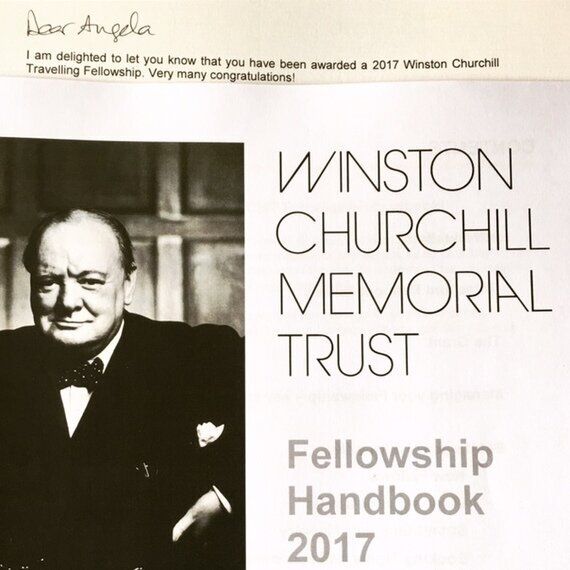It seemed to take forever for the letter to arrive, but when it did it was worth the wait: "Dear Angela, I am delighted to let you know that you have been awarded a 2017 Winston Churchill Travelling Fellowship. Very many congratulations.

credit Angela Samata
Those words mark the start of an exciting adventure! The letter went on to invite me to attend a seminar just a few weeks later, during which I would meet the other successful recipients along with Churchill Fellows who had completed their travels this past year.
Weeks before, as I sat waiting to be called into my final Churchill interview, I met one of my fellow applicants who was also waiting to be called in. Despite our nerves, we started talking about our projects and right there and then. I remember thinking 'If I don't get my project funding I really hope she does'. Her project was to travel to the USA to research culturally appropriate services for black women with multiple complex needs. You can imagine the smile on my face when I walked into the seminar for successful applicants to see her familiar face as I walked in. It was her - Geraldine Esdailee.
The Winston Churchill Memorial Trust states that it funds individuals from the UK to "Travel to learn - return to inspire. We fund British citizens to investigate inspiring practice in other countries, and return with innovative ideas for the benefit of people across the UK". This year has awarded 150 Travelling Fellowships across the UK totalling £1.4 million. The Fellows will be travelling to 49 countries between them, across six continents, where they will carry out a wide range of projects, designed to benefit their communities and professions in the UK. The average length of a Fellowship is six weeks, but I will probably be away for closer to eight.
My project will bring together my experience of working both in mental health and the Arts as I visit New York, Chicago, San Francisco and Tokyo to look at Outsider Art practice. The definition of Outsider Art is often subject to debate as discussed by Priscilla Frank in What Is The Meaning Of Outsider Art? The Genre With A Story, Not A Style. First used in 1972 by Roger Cardinal as the title of his book, Outsider Art was an exact translation of the term 'Art Brut' used to describe artwork produced by untrained artists since 1948.

credit Roger Cardinal
Some have argued that the term Outsider Art is itself exclusive and not inclusive, serving as a divisive term rather than a useful label. Outsider Art is often viewed as work produced not only by formally untrained artists, but also by those who often face physical or mental health challenges.
As you can imagine, it would be impossible to thoroughly investigate all Outsider Art in just 7 weeks, so the scope of my work will specifically look at Outsider Artists with mental health challenges, exploring 5 specific aspects;
1. Is the label Outsider Art useful? Does it help us to navigate the complex intersections between health and creativity, work and wellbeing, mainstream and marginality?
2. How is Outsider Art best curated? Should convention mean diagnosis/biographical details are included on labels and interpretation?
3. What are the ethical and moral considerations of exhibiting Outsider Art, especially in a commercial setting, managing finances, the expectations of the artist and the gallery?
4. What are the clinical and therapeutic implications of Outsider Art? What is the source of the tension between formal art therapy and facilitating Outsider Art. Should we in the UK adopt a non-interventionist approach?
5. Should Outsider Art be more closely aligned with public health services in the UK as it is in Japan? How/should we make this happen?
...and so my journey begins, almost 10 months before my first plane takes off in January 2018. It will be almost a year filled with forging links in the places I'll visit; talking to artists, curators and mental health professionals working in the field in the UK and making sure I can share what I witness in the USA and Japan when I return.
